Search Results
Central Nervous System (CNS) Lymphoma
General InformationCentral nervous system lymphoma is a rare non-Hodgkin lymphoma in which malignant (cancer) cells from lymph tissue form in the brain and/or spinal cord (primary CNS) or spread from other parts of the body to the brain and/or spinal cord (secondary CNS). Because the eye is so close to the brain, primary CNS lymphoma can also start in the eye (called ocular lymphoma). The cancer can also involve the spinal fluid that bathes the spinal cord and brain. This is called leptomeningeal lymphoma. Both primary and secondary CNS lymphomas are rare diseases.
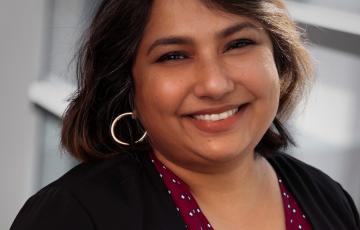
Amrita
November 2007 was the start of my journey as a cancer warrior and survivor. I was diagnosed with Diffused Large B cell non-Hodgkins lymphoma (NHL) and it is incredible for me to reflect on the fact that I am coming up on my 15th year anniversary of diagnosis and treatment. I do hear and read powerful stories of other survivors and in so many ways I think my journey with and after cancer diagnosis resonates with those.

Jason
I'm Jason, and I am 38 years old. Early last year I was very sick. I had a fever that would not go away for over three months. Every day I broke 103 degrees, and at least six times I hit 106 degrees. I was getting bloodwork after bloodwork done, seeing doctor after doctor when finally, I met my oncologist, and he did a bone marrow biopsy. He called me the next week and told me I had stage 4 Hodgkin lymphoma (HL), and we needed to start tests immediately so we could expedite my chemo treatment.
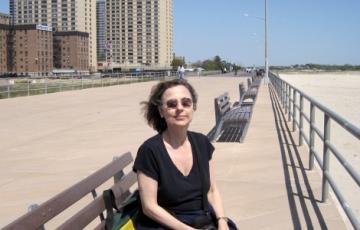
Paula
My Cancer Story/Journey so far:
I was diagnosed 21 years ago at age 44 with low-grade indolent B cell follicular lymphoma.
I went for a routine colonoscopy, and they found a very small swollen lymph node in my ileum. I had absolutely no symptoms at all. After two colonoscopies in two weeks and four medical consultations, I went through CHOP chemotherapy. Today, they would have just done "wait and watch." At the end of my treatment, even my oncologist said if I had come to him without other recommendations, he would have done nothing. Anyway, that is history.

Jennifer
I remember diagnosis clearly. I was sitting in the UCSF doctor’s office of a man I had not met before a physician I was referred to. I had first gone to a doctor on my Blue Cross Insurance list, a Russian woman who said the word “lymphoma.” I was hoping the foreign word would continue to be foreign. She gave me a referral to UCSF on Fillmore Street in San Francisco close to where I was living at the time.
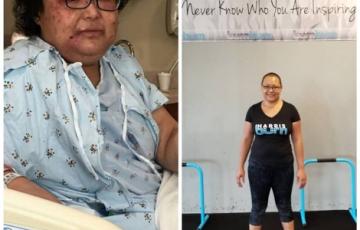
Lily
My name is Lily Tran. On December 7, 2007 my father passed away. A week after returning home from the funeral, I was sick with pneumonia. My primary care doctor prescribed me antibiotics and an inhaler. Two weeks later, I was still not feeling well. I was swelling and I was experiencing a sharp pain on the right side of my stomach. In January 2008, I went to the ER and they did an ultrasound of my stomach and saw something was wrong with my gallbladder and admitted me to the hospital for an operation to remove the gallbladder.
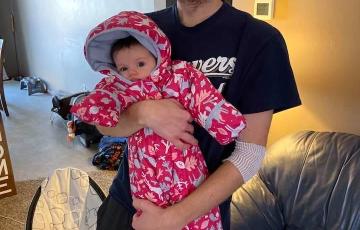
Dave
It all started for me the day our first child turned two months old. She was extremely colicky, and we would spend hours every night trying to get her to sleep. This particular night, I bounced on our exercise ball to try to get her down, and that caused some extremely bad back pain. I could tell something was seriously wrong. When I woke up the following day, the pain was significantly worse, and there was no way that I could even work.

Addison
Florida is my happy place. It's where I've vacationed for over three decades. And when my husband and I had kids, it became our family's happy place too. Schedules are forbidden on vacation. We tell time by the sun as we sit on the beach with our feet in the sand, watching the tide roll in and out. While on vacation, we celebrate birthdays ― and they're done up big ― because that's the only way that we know how to celebrate birthdays ― BIG.
Acute Lymphoblastic Leukemia
Acute Lymphoblastic Leukemia- Is a cancer of the bone marrow and blood
- Progresses rapidly without treatment
- Does not have a clear cause
Click here to access ALL statistics.
Click here to access information about ALL in children and teens.
Miriam
My name is Miriam Hernandez, and I have been a long-time volunteer with The Leukemia & Lymphoma Society (LLS). I first started volunteering in 2010 working with the LLS Greater Los Angeles Region and their Patient Services Team to help with outreach into the Latino community in Los Angeles. I worked on an education program about myths and misconceptions about blood cancers done in the form of a “bingo” style game.
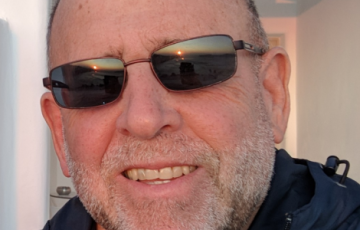
Andrew
When I write about the fact that I have cancer, it is not my intention to suggest that I am in any way unique. Although when I was first diagnosed with non-Hodgkin's lymphoma in 2010, I did feel special, and not in a good way. At first, I thought I had a hernia. But the surgeon said no. It took almost two months for the biopsy of the lymph node that he extracted from my body to be definitively identified. They sent it to Bethesda for further analysis. Still no answer. I then had a second biopsy.
Samantha
I was diagnosed with cancer in January 2023. We initially thought it was a misshapen aortic arch until I got an echocardiogram. After I was formally diagnosed, I told my friends. I underwent surgery, and my friends and family came to visit me once I was awake. I was set to be in a runway show before I was diagnosed, and I decided to still walk in it. I dyed my hair purple before the show so I could raise awareness on the runway. This is when my modeling career began, and I began to gain a following on TikTok.
Helena
In 2018, a few days before Thanksgiving, Helena noticed something. She was having difficulty lifting speakers at her gigs. She became winded after only a few songs. Even the most minute tasks became daunting.
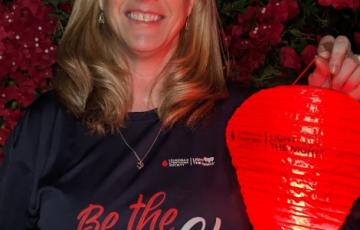
Heather
Heather Banks draws her inspiration from her good friend, who has been fighting non-Hodgkin's Lymphoma for the past 10 years and her college best friend who is a survivor. She is motivated by her friends’ strength, determination, and positivity. In times of feeling helpless, she channels that energy and puts it into her sewing machine.

Tracy
In 2001 at the age of 31, I was living in Maui working at the Ritz Carlton and began to feel sick. I had a rash on my hand, was tired, losing weight, and just did not feel well. I had been healthy all my life so thought it would pass.
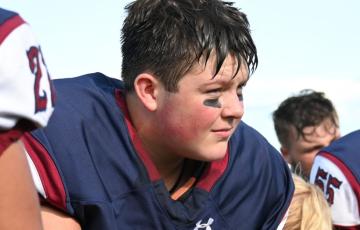
Joshua
Joshua was a regular 11-year-old. He played multiple sports, was learning to play the flute in the school band, and enjoyed having fun with his friends. After a few weeks of a nagging sore throat and enlarged tonsils, we took Josh to see his primary care physician (PCP). They ran some tests and sent him home. No big deal, just a routine trip to the doctor’s office. Josh's PCP called the next day at 6:00 p.m. . . . on a Saturday. She said that she was worried about some of Josh's blood test results and recommended we go to an urgent care or emergency room for further checks.

Tristan
I live in Colorado but grew up in Massachusetts and am an elite rock climber. I've traveled worldwide to climb and was the 2015 collegiate national champion. In April 2022, I was bouldering by myself and hit my shoulder on a rock behind me. Falls happen as frequently as a baseball player may swing a bat while climbing. This fall was nothing out of the ordinary except my shoulder was bruised far worse than I would expect from how hard I hit it, growing to the size of my hand by the next day. I remember looking at it initially and thinking, "Geez, I hope that's not leukemia."
Relapsed and Refractory
Refractory non-Hodgkin lymphoma (NHL) is NHL that has not responded to initial treatment. Refractory disease may be disease that is getting worse or staying the same.
Relapsed non-Hodgkin lymphoma (NHL) is NHL that responded to treatment but then returns.

Gerardo (Jerry)
I came into this world with a 65,000-mile warranty. During all my life, maybe I had a cold once in a while, some minor stuff, a bit of bursitis, but nothing that you would consider life-threatening at all. One day during a routine exam, I had blood work done. My PCP told me she didn't like my white blood cell count, and it was best to have a specialist look at it. She referred me to an oncologist. I didn’t think of it much, and since I was feeling fine, I thought it must be nothing of consequence.

Rick
Rick Ostroff and his family have a legacy of philanthropy with a heartfelt connection to a disease he never had. During the first three years of his life, he spent time on the leukemia floor of Children’s Hospital in Boston but eventually was found to have the critical illness of gamma globulin anemia rather than then-fatal leukemia.

Heriberto
I was diagnosed with Burkitt lymphoma (BL) on Friday the 13th ― August 13, 2021, to be exact ― seven months after being married, three months after my wedding reception, and going on my honeymoon.

Allie
When I was in fourth grade in 2015, my older brother Nate (a freshman in high school at the time) was rushed by ambulance to the U of M Masonic Children’s Hospital. His spleen was holding 10 times the normal amount of red blood cells. This led to the discovery of his cancer. He was later diagnosed with chronic myeloid leukemia (CML). He missed out on the first month of high school and hockey season, but he was able to take medicines at home so that he could eventually attend the rest of the school year.
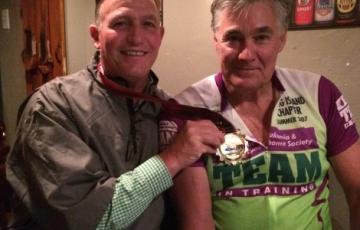
Tim
On March 10, 2015 I reached another milestone and turned 60 years young. I have been blessed with good health and the ability to swim, bike, and run. For over a decade I have been involved with The Leukemia & Lymphoma Society (LLS) as a board member and participant in more than a dozen fundraising triathlons/marathons for Team In Training events all over the world. My efforts will continue until cures for blood-related cancers are realized.
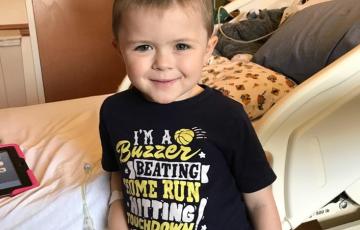
Lincoln
In the fall of 2017, Lincoln was not feeling well and had typical cold virus symptoms. He also had a recurring fever and an unexplained rash. After two trips to the pediatrician, the doctor thought he had a persistent virus and then bronchitis. On our third visit, they thought he may have mono, so bloodwork was taken, and we were told to go to Children’s Hospital immediately. We were scared and had no idea what was wrong. Cancer was not even a thought.

Leigh
In August 2019, I developed pneumonia for the third time in two years. I had been finding that my ability to fight off illness was not as good as it used to be. Once it got to the point that I was having problems breathing, I decided to go to urgent care. Two years prior, I had been hospitalized for pneumonia, and I wasn’t looking forward to it happening again. I Googled the nearest urgent care, and it was closed. There was only one nearby that was open, but I had never been before.